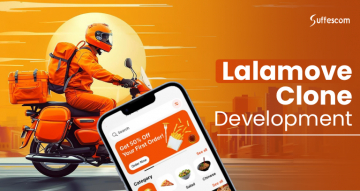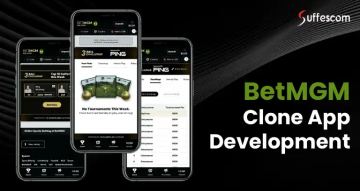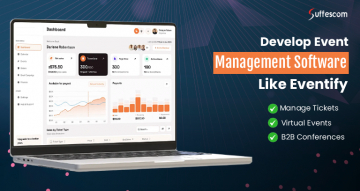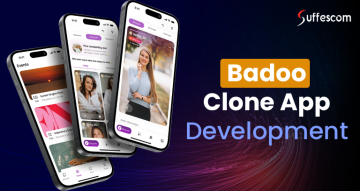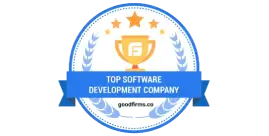Real-Time Transportation App Development Like Transit | Transit Clone Development

Moving from traditional transport systems to modern ones is essential with rapidly changing time. It is very clear to opt for innovative and tech-driven solutions, as smart cities are embracing advanced transport solutions to streamline mobility and meet the needs of modern commuters. Real-time transport apps solve this by offering better choices so that you can build an app that gives commuters accurate updates and better travel choices. It helps users to track buses, plan routes, and avoid long waits.
The integration of AVM systems, such as the IBA AVM, has boosted real-time tracking of public transport vehicles, leading to enhanced operational efficiency and passenger satisfaction.It tracks buses live and improves daily operations. We built an app like Transit that shows real-time updates, helping people get around more easily. Whether you're a new entrepreneur or a traditional transportation business owner, create an app like transit to grow your business. According to Precedence Research the market size of Global transportation services is 9.23 trillion in 2025 and is projected to grow around USD 18.63 billion by 2034, which showcases a CAGR rate of 8.11%.
What is the Transit Clone App and Why Is It So Popular?
A Transit clone app replicates the core functionality of leading public transit platforms, offering users trip planning, real-time schedule updates, and multi-modal route integration, such as walking, cycling, ride-sharing, and public transport information on the map. It aggregates live arrival times, delay alerts, and service disruptions into an intuitive interface.
Why It’s So Popular?
1. Cost Effective:
Leveraging scalable features helps to minimize upfront development costs while ensuring long-term operational value.
2. Live Vehicle Tracking:
Users plan and track their trips with real-time arrival predictions, enhancing travel convenience and reducing uncertainty.
3. Seamless Route Planning:
Uses complex algorithms to analyze the data for the fastest or most convenient journey.
4. Operational Efficiency:
Enables transport operators to modernize services and improve customer satisfaction through accurate, timely information.
5. Minimum Launch Time:
Adapting strategic planning and agile development methodologies accelerates the delivery of fully functional public transportation app on map.
Want to Launch a Transit Clone App Today
Why Building a Transit-Like App Is a Smart Business Move?
Building a transit-like app is a smart choice because it leverages technology that helps to improve public transportation, boost user experience, and make an efficient, better way for people to commute. Choosing clone app development for such platforms allows businesses to replicate successful frameworks while tailoring functionalities to fit their operational needs. Here are points to consider which make sense:
1. Growing Market Demand
The global demand for transportation is continuously increasing, leading to more effective and flexible travel options. By launching an app like Transit, businesses can meet this demand, offering essential services that are becoming more necessary, especially in urban areas.
2. Cost Efficiency and Resource Optimization
By utilizing real-time data for route optimization, companies can minimize cost-related inefficiencies like idle time, helping them create an app like Transit that delivers optimal performance and value.
3. Enhancing Customer Engagement and Retention
Transit clone encourages greater customer engagement using real-time tracking, simple payments, and customised ride experiences. Instead, it optimises numerous aspects of the application to make it efficient and intuitive, offers smooth transportation options to users and increases user satisfaction.
4. Creating New Revenue Streams
A transit-like app doesn’t just rely on traditional fares. It enhances multiple revenue generation opportunities, such as subscription services, in-app advertisements, and collaboration with local businesses.
5. Data-driven Insights
Applications collect valuable data regarding transportation patterns, which allows for better resource allocation and improved transit systems. Businesses can make better decisions, which ultimately leads to business growth.
Top features for the Transit Clone app:
These are some of the crucial features that help to create a Transportation App Like Transit to make your business unique in a crowded market:
A. Admin Panel features
1. Sign In
It allows authorised access to the platform for a secure and easy login by entering details such as name, email ID, and password. Helping to ensure the sensitive data remains safe, which ensures smooth user verification at every login.
2. List of Service Providers
The application includes a list of all service providers and a diverse range of features for various needs, including flexible service options and technical support for each provider's performance. It facilitates numerous benefits, such as greater reach and improved accuracy, to ensure smooth operations across the board.
3. Subscription Management
In addition, subscription management helps businesses track user and provider subscriptions. Admins can manage renewals, track payments, and ensure all billing is accurate and up-to-date, helping maintain a steady flow of income.
4. Real-time Public Transit Tracking
This feature allows admins to monitor the vehicle's location, traffic conditions, accurate ETAs, and route progress. It boosts operational efficiency by enabling immediate responses to route changes and delays because of uncertainty. The power of Transit like app development lies in its ability to leverage real-time data for route optimization.
5. User Support and Dispute Resolution
Facilitate a positive user experience to address potential issues. It includes 24/7 assistance, in-app help, live chat, and a seamless claim process that ensures quick issue resolution, promoting customer trust and improving overall satisfaction.
B. Customer Panel features
1. Registration
The app offers a simple registration process, allowing customers to quickly create profiles. Customers can use the app with minimal hassle by adding essential details like payment methods.
2. Alert users
The application sends users notifications or alerts about ride updates and delays. This improves the overall user experience by ensuring customers know the ride's status.
3. Real-Time Ride Tracking
A system with GPS installed monitors the vehicle's status and location. With real-time tracking, customers can see precisely where their ride is and when it will arrive. This enables faster responses and exact ETA predictions.
4. Easy Booking Process
Allow users to choose the region, destination, and desired time and date to travel within the transit clone app. This offers significant convenience, increased satisfaction, and potentially higher sales.
5. Multiple Payment Options
Transit clone apps facilitate the users to pay with cards, others prefer crypto payment, and let's be real, cash still exists. The app lets customers choose whatever payment method works best for them—no hassle, just flexibility. It's the kind of thing that makes a service feel more user-friendly.
6. Ride History and Receipts
Customers can always look back at their ride history. This feature is a lifesaver when they need to track past trips or pull up expense receipts. And hey, it just feels nice to have a record of your journeys in case you need it down the road.
Scale Transportation Business with Transit Clone App Solutions!
Key Benefits of Building a Transit Clone App for Modern Commuters
Whether building a transportation app like Transit, you need to focus on building the tech product as you solve real-world challenges. There are some benefits of the Transit clone app:
1. Data Privacy and Security
User data is encrypted and stored securely, ensuring compliance with privacy laws and earning user trust. With rising concerns over digital safety, this is a significant plus.
2. Ad-Free Experience
Numerous apps are scattered with pop-ups. Instead, the Transit clone app provides an intuitive and clean user interface that helps users have a more enjoyable and engaging experience.
3. Crowdsourced Updates
Empower users to contribute real-time information, such as service disruptions, that helps boost the app’s reliability and keep the community informed.
4. Time-Saving Trip Planning
With live vehicle tracking and multi-modal route suggestions, users can minimize wait times and choose the fastest or most convenient paths.
5. User-Centric Design
By opting for Simple, intuitive interfaces, the application is accessible for all age groups, from young students to seniors relying on public transit.
Innovative Technologies to Make Your Transit Clone Stand Out
Grab innovative technologies to elevate your transit clone app and stay ahead of the competition:
1. AI-Based Route Prediction
Integrating AI in the application analyzes traffic, weather, and other factors that suggest the fastest or most efficient routes. It reduces wait times, enhances user satisfaction, and ensures a smoother experience.
2. Travel App Chatbot Integration
When building a transportation app like Transit, incorporate a 24/7 travel app chatbot. Travel chatbot solutions facilitate the users ti solving queries, offering real-time updates, and helping them book.
3. IoT features
It enables vehicles to communicate with the app by providing real-time location tracking, monitoring vehicle conditions, and utilising fleet management. It also provides up-to-date information to users regarding bus arrivals, delays, and the status of the vehicle.
4. AR/VR Integration
Incorporating AR and VR in a transit clone app enhances the user experience. AR offers real-time overlays of transit information, while VR offers immersive simulations regarding travel scenes, making your application stand out.
Smart Monetization Strategies for Your Transit Clone
Numerous monetization strategies help to unlock new revenue opportunities and ensure sustainable growth to build an app like Transit:
1. Ads and Sponsorships
Platform owners can generate revenue by displaying targeted ads or securing business sponsorships. Earnings come from ad impressions, clicks, or sponsor visibility.
2. Subscription Models
Offering premium subscription plans provides a consistent revenue stream. Users pay for additional features like ad-free access or exclusive services.
3. Premium Features
Charging users for advanced features, such as real-time traffic updates or customized routes, allows platform owners to monetize specific functionalities.
4. Affiliate Services
By partnering with third-party services like ride-sharing or local businesses, platform owners earn commissions for user referrals.
5. Data Monetization
Platform owners can sell anonymized user data to market researchers or advertisers, businesses generating income through valuable consumer insights.
A Breakdown of Transit Clone Development Budget
Developing a Transit clone app Like Transit and Uber for public transportation, it can range from $7,000- $15,000 depending on scalability, complexity and features.
| App Complexity | App Budget | App Features |
| MVP App | $7000 | Alerts & notifications, multi-language support and ride history |
| Mid-Level App | $7000 - $10000 | Real-time vehicle tracking, In-app push notifications, user profile and preferences |
| Complex App | $10000 - $15000 | Multi-model integration, dynamic route optimization, driver and fleet management portal |
Step-by-Step Process to Create Transportation App Like Transit
A comprehensive guide of development from starting to launching a cutting-edge application like Transit:
1. Define Objectives
Start by clearly outlining your app's business goals. Identify the core problems it will solve, the target users, and how your Transit clone development will stand out in the market.
2. Conduct in-depth Market Research
Analyze user expectations, check competitors, and identify all market gaps. This will help validate your idea and inform feature planning for your transportation app like Transit.
3. Grab the right Tech Stack
Choose the right tech stack that evaluates various factors and aligns with project requirements. Choose between native platforms such as ios and Android and cross-platform.
4. Plan the UI/UX Design
To build an app like Transit, design intuitive and accessible interfaces. Emphasise user flow and clarity to enhance engagement and retention.
5. Build Backend Architecture
Set up robust, secure, and scalable backend systems using technologies like Node.js, Django, or Mysql. Include APIs, databases, and admin dashboards to manage core functions.
6. Incorporate Third-Party Services
To extend app capabilities and improve user experience, add APIs for maps, geolocation, payment gateways (like Stripe or PayPal), and communication tools.
7. Test Across Devices
After integrating APIs, evaluate how applications perform and display across various platforms. Run QA cycles involving functional, usability, and performance testing.
8. Deploy to App Store
Launch your transportation app on the App Store and Google Play, ensuring smooth performance, guideline compliance, and clear feature highlights like live tracking and route planning.
9. Optimize and Monitor
After launch, gather user feedback and analyze app performance. Continuously improve based on usage patterns and evolving market demands.
Need an expert's consultation to boost ROI of your public Transit App
Technologies Used in Transit Clone Development
Our team utilizes a modern set of technologies for building apps like Transit, covering various critical aspects from mobile app development to integrations, testing, and launching. Here's how these technologies align with building a transit-like app:
| Aspects | Tech Stack |
| Front-end | React, Angular JS, Vue.js |
| Back-end | Node JS, MYSQL, Python ( Django) |
| Design | Figma, Sketch, Sympali |
| Integrations | Strip, Paypal, Google Pay, Firewall |
| Testing: | Swagger, Charlis, Jeera |
| Launching | Google Play Store, App Store, AWS |
Create a Transportation App Like Transit with Suffescom Solutions
When looking to develop an app like Transit, partnering with a leading transportation app development company is crucial for entering the market with future-proof, scalable solutions. Suffescom stands out as a reliable and trusted partner, offering top-tier, innovative solutions that meet the growing demands of the industry.
1. Ongoing support and Maintenance
Our team offers 24/7 technical support, regular security audits, and feature-driven updates to help you stay ahead of the competition.
2. Proven Track Record and Case Studies
Leveraging years of hands-on experience, we have delivered over 50+ transit and ride-hailing solutions to clients worldwide.
3. Cost-Effective Development for Maximum ROI
Whitelabel solutions cut development time by up to 60%, ensuring predictable budgeting and long-term profitability growth.
4. Robust Security Measures
We implement advanced security protocols, including data encryption and secure authentication, to protect user data and ensure compliance with industry standards.
5. Scalable Architecture for Future Growth
Our solutions are built with scalability, ensuring your application can handle increasing demands and feature expansions without compromising performance.
Faqs:-
1. What is the cost of low-code transportation app development?
The cost of developing a low-code transportation app ranges from $7,000 to $15,000, which depends on app complexity, integrations, and deployment scale.
2. What is the Business Model of Transportation App Like Transit?
Transportation apps like Transit operate on multiple revenue streams, including subscription models, advertisements, affiliate partnerships, and data monetization through anonymized analytics.
3. How Transit Clone app Work?
A Transit clone app includes the mimics functionalities of a transit app that integrates real-time vehicle tracking, route planning, and multi-modal transport options. Clone apps are cost-effective and faster to develop than custom-built apps.
4. How to Clone a Transit Application?
Cloning a Transit app involves market research, feature planning, tech stack selection, backend development, API integration for real-time tracking, UI/UX optimization, and multi-platform deployment.
5. Why Build an App-Like Transit?
Building an app like Transit offers real-time public transit tracking and trip planning. With the growing demand for efficient urban mobility solutions, it enhances the user experience.
6. How to Create a Transportation App Like Transit?
Create a transportation app like Transit by defining project scope, selecting a scalable tech stack, integrating real-time tracking APIs, implementing secure payment systems, and ensuring ongoing maintenance support.
